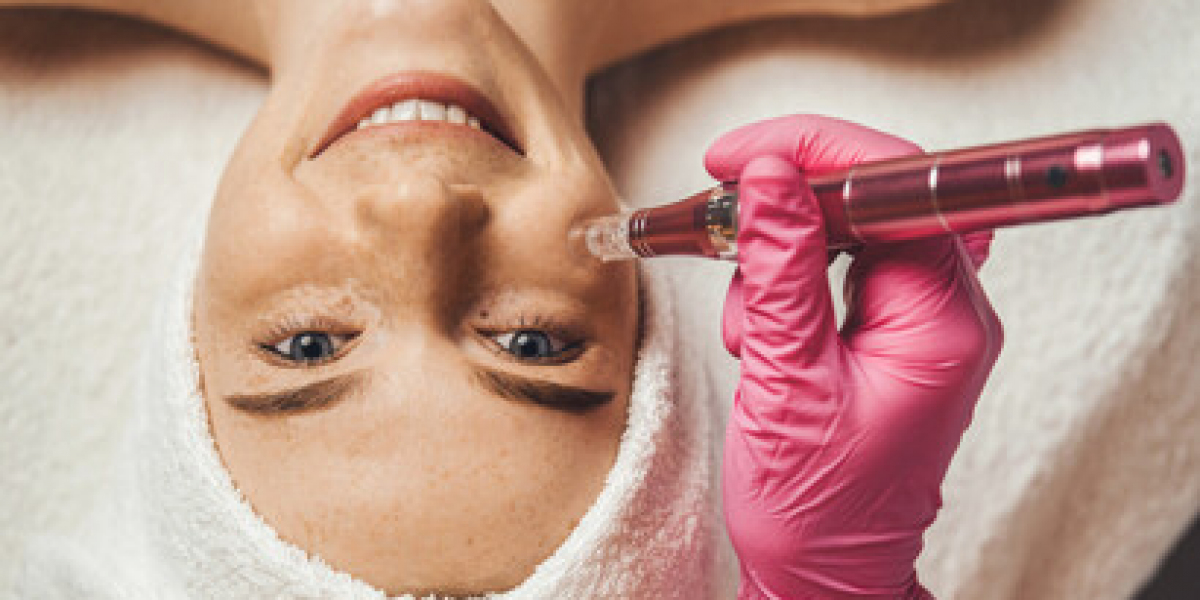In the world of skincare, Dermapen microneedling has become a buzzword, often associated with rejuvenated skin, reduced scars, and the promotion of collagen. As its popularity grows, so do the myths and misconceptions surrounding the treatment. While Dermapen is widely recognized for its effectiveness, it’s crucial to separate fact from fiction to make an informed decision about whether it's the right solution for your skin concerns.
In this blog, we will explore the common legends and facts about Dermapen ديرمابين treatment to provide clarity and help you understand the real benefits of this innovative skincare procedure.
What Is Dermapen Microneedling?
Before diving into myths and truths, let’s briefly explain what Dermapen microneedling is. Dermapen is a medical-grade device that uses multiple fine needles to create controlled micro-injuries to the skin’s surface. These tiny punctures stimulate the body’s natural healing response, triggering the production of collagen and elastin, which are key to achieving smoother, firmer, and younger-looking skin.
Dermapen treatments are effective for addressing various skin concerns, including acne scars, fine lines, wrinkles, uneven skin tone, and enlarged pores. The treatment can be customized to suit different skin types and conditions, making it a versatile option for many people seeking skin rejuvenation.
Legend 1: Dermapen Microneedling Is Painful
Fact: Dermapen treatment is generally well-tolerated and minimally painful.
One of the most common myths about Dermapen microneedling is that it’s an extremely painful procedure. While it’s true that the device creates tiny punctures in the skin, most patients find the treatment to be manageable. Before beginning the procedure, a topical numbing cream is applied to the skin, which significantly reduces any discomfort during the treatment.
Many patients report feeling only mild sensations, such as a slight prickling or vibrating feeling, during the procedure. After the treatment, some redness or slight swelling may occur, similar to a mild sunburn, but this typically subsides within a few hours to a day. For most people, the procedure is far less uncomfortable than they initially anticipated.
Legend 2: Dermapen Treatment Provides Instant Results
Fact: Results take time to develop and improve gradually.
Another misconception is that Dermapen microneedling provides instant, dramatic results. While you may notice an immediate improvement in skin texture after the treatment, the full benefits take time to manifest. The micro-injuries created during the procedure kickstart the body’s natural collagen and elastin production, but this process occurs gradually over several weeks.
Typically, collagen production peaks around 6 to 8 weeks after treatment, and results continue to improve for up to 6 months. For optimal results, multiple Dermapen sessions may be required, especially for individuals with more severe skin concerns like deep acne scars or extensive sun damage.
While Dermapen does provide visible improvements in skin texture and tone, it’s important to maintain realistic expectations about the timeframe needed to see full results.
Legend 3: Dermapen Is Only for Anti-Aging
Fact: Dermapen is effective for a variety of skin concerns, including acne scars, hyperpigmentation, and more.
While Dermapen is often marketed as an anti-aging treatment due to its collagen-boosting properties, it’s actually a highly versatile treatment that can address various skin issues. Dermapen is highly effective for treating a wide range of skin concerns, including:
- Acne Scars: Dermapen stimulates collagen production, helping to fill in and smooth out depressed acne scars.
- Hyperpigmentation: Microneedling can help reduce pigmentation irregularities, such as sunspots, age spots, and melasma.
- Uneven Skin Texture: Dermapen’s ability to promote skin regeneration makes it an excellent choice for improving rough or uneven skin surfaces.
- Enlarged Pores: By stimulating collagen production, Dermapen helps to tighten the skin and reduce the appearance of enlarged pores.
- Stretch Marks: Dermapen can help improve the appearance of stretch marks by promoting skin regeneration and collagen synthesis.
This means Dermapen isn’t just limited to anti-aging. It is a multi-purpose treatment that can address a wide variety of skin concerns, making it suitable for many individuals seeking to improve their skin’s health and appearance.
Legend 4: Dermapen Treatment Is Only for Older Skin
Fact: Dermapen is suitable for most skin types and ages, though it’s important to consult a professional before treatment.
Another myth surrounding Dermapen is that it’s only suitable for older individuals. While it’s true that Dermapen can effectively address signs of aging, it is also suitable for younger individuals, particularly those who suffer from acne scars, uneven skin tone, or enlarged pores.
Dermapen can be used on a variety of skin types and ages, as long as the patient is free from any contraindications, such as active acne, eczema, or open wounds. For younger individuals, Dermapen can help to reduce acne scarring and improve skin texture, while older patients may benefit from its anti-aging effects, such as reducing wrinkles and tightening loose skin.
Legend 5: Dermapen Is Only Effective for the Face
Fact: Dermapen can be used on many areas of the body, not just the face.
While Dermapen is most commonly used on the face, it can also be effective on other areas of the body. Areas such as the neck, décolletage, hands, and even the scalp can benefit from Dermapen microneedling. In fact, Dermapen is becoming increasingly popular for scalp treatments to promote hair growth, especially in cases of thinning hair or mild hair loss.
In addition to treating acne scars and wrinkles on the face, Dermapen can also be used to treat stretch marks on the body, reduce pigmentation, and improve the overall texture of the skin. This makes it a versatile treatment for individuals seeking to rejuvenate more than just their facial skin.
Legend 6: Dermapen Treatment Causes Significant Downtime
Fact: Dermapen typically requires little to no downtime.
Many people fear that Dermapen microneedling will leave them with significant downtime, as they might associate the procedure with other more invasive treatments. However, Dermapen typically requires very little recovery time.
After the treatment, patients may experience some redness and mild swelling, similar to a sunburn. These side effects generally subside within a few hours to a day. You may also notice slight peeling or flaking as the skin begins to heal, but this is a normal part of the process. Most individuals can return to their regular activities the next day without any noticeable side effects.
It’s important to follow post-treatment aftercare instructions, including using gentle skincare products and avoiding direct sun exposure, to ensure the best results.
Legend 7: Dermapen Is Safe for Everyone
Fact: Dermapen is generally safe, but it’s important to consult a professional to determine if it’s right for you.
While Dermapen is generally safe for most individuals, it’s essential to consult with a qualified practitioner before undergoing treatment. Certain skin conditions, such as active acne, eczema, or rosacea, may make Dermapen treatment unsuitable or require special consideration.
A licensed and experienced practitioner will assess your skin and medical history before performing the procedure, ensuring that Dermapen is appropriate for your skin concerns. By doing so, they can customize the treatment to meet your individual needs and minimize any potential risks.
Conclusion
Dermapen microneedling is an effective and versatile treatment that can address a wide range of skin concerns, from fine lines and wrinkles to acne scars and stretch marks. However, there are many myths and misconceptions surrounding the treatment, which can make it difficult to fully understand what Dermapen can do for you.









